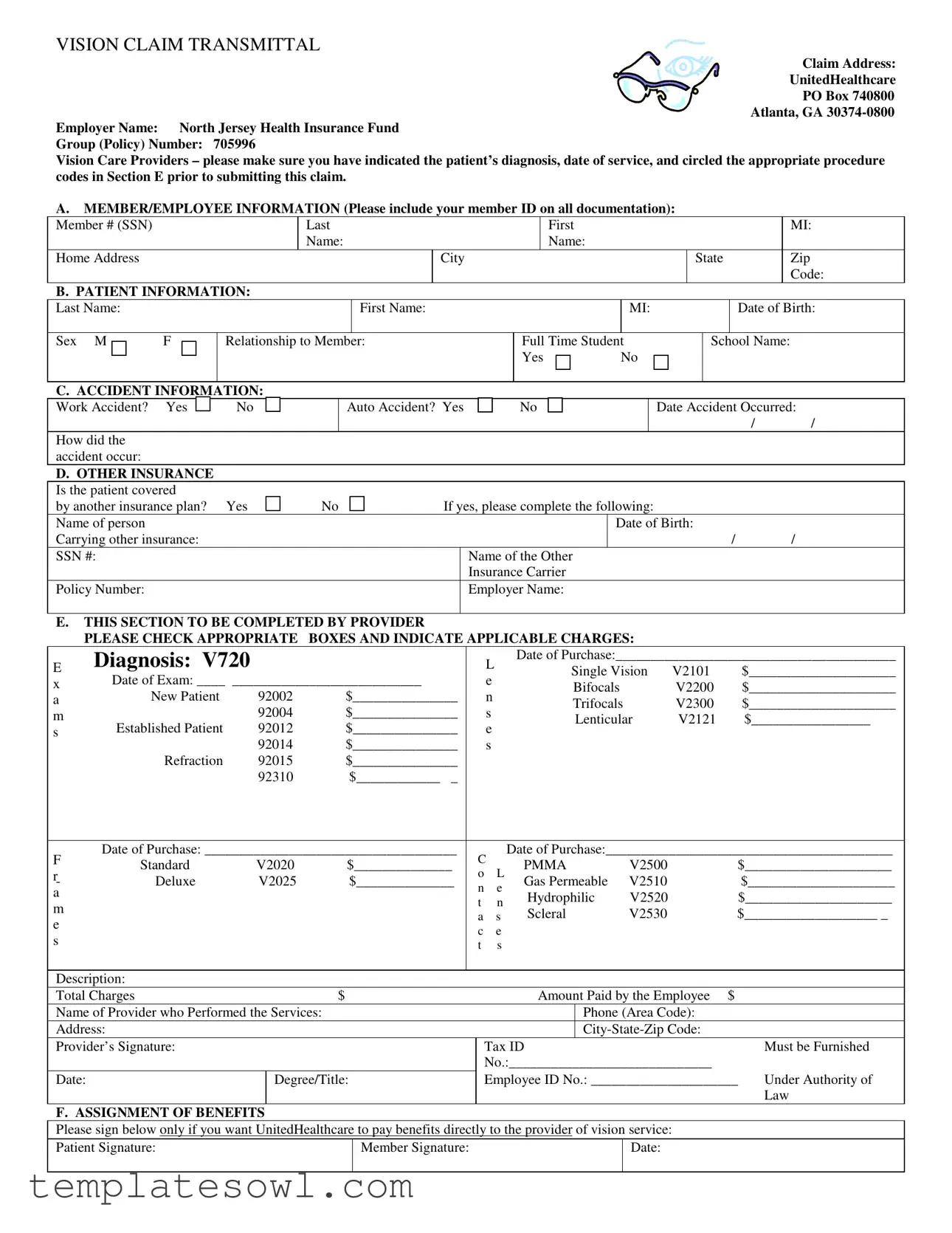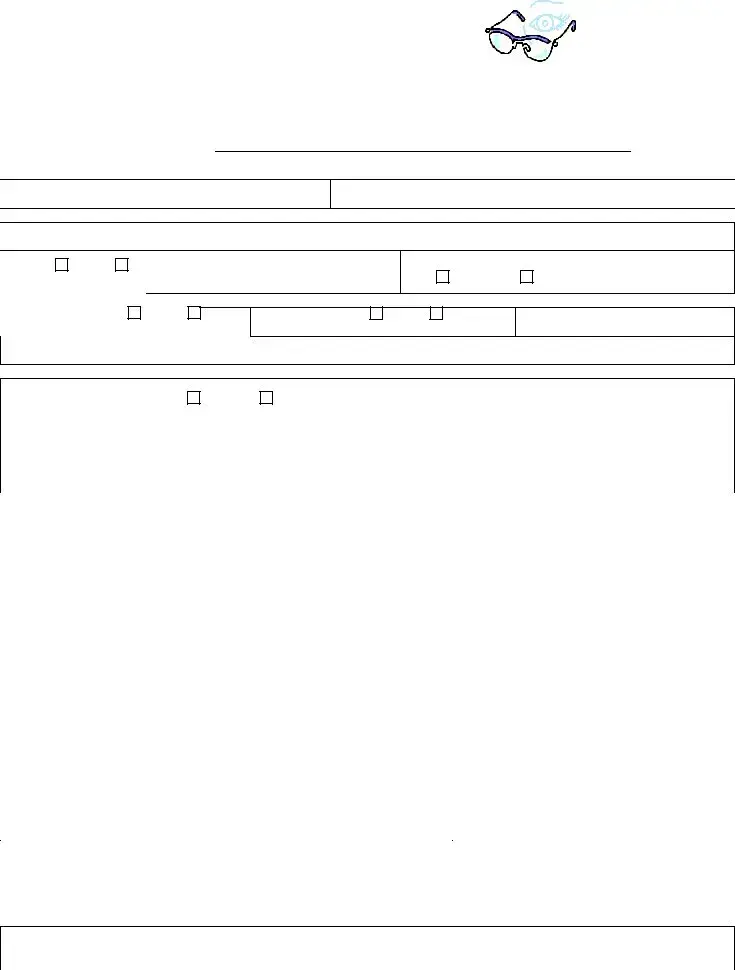What is the Vision Claim Transmittal form used for?
The Vision Claim Transmittal form is a document that healthcare providers use to submit claims for vision services rendered to a patient. It ensures that all necessary information about the patient, the services provided, and the related costs are communicated to the insurance provider for payment processing.
Where should I send the completed Vision Claim Transmittal form?
Once you have fully completed the form, it should be mailed to UnitedHealthcare at the following address: PO Box 740800, Atlanta, GA 30374-0800. Ensure that you only send this form without any additional receipts or bills attached, as those documents are not required.
What information is required from the member on the form?
The member needs to provide their member ID, social security number, last name, home address, and other identifying details. It is essential to include this information consistently across all documents submitted to prevent any processing delays.
What details must be provided about the patient?
The form requires information such as the patient’s last name, first name, date of birth, and relationship to the member. For dependents who are full-time students, you should also specify the name of the school they attend.
How should accident information be documented on the form?
If the vision claim is related to an accident, it’s crucial to check the boxes for "Work Accident" or "Auto Accident" as applicable. You must provide a brief description of how the accident occurred and the date on which it happened, if relevant.
What if the patient has other insurance coverage?
If the patient is covered by another insurance plan, this information needs to be filled out in the designated section. You will need to provide details such as the name of the insurance carrier, policy number, and the name and date of birth of the person carrying that insurance coverage.
What specific information should the vision care provider complete?
Providers must indicate the patient's diagnosis, services performed, associated charges, and dates of service in Section E of the form. They should also make sure to check the appropriate boxes for the procedures performed and sign the form as the provider responsible for delivering the services.
Do members need to sign the form?
Yes, the member and the patient (if applicable) must sign the form, especially if the member wants UnitedHealthcare to pay benefits directly to the provider. This signature authorizes the claim to be processed and helps prevent delays in payment.
Why shouldn’t receipts or bills be attached to the form?
Attaching receipts or bills to the Vision Claim Transmittal form can complicate the processing of the claim. The insurance company has a designated procedure for handling these claims, and including unnecessary documents could lead to confusion or processing errors. Stick to submitting just the completed form to ensure smooth handling of the claim.

